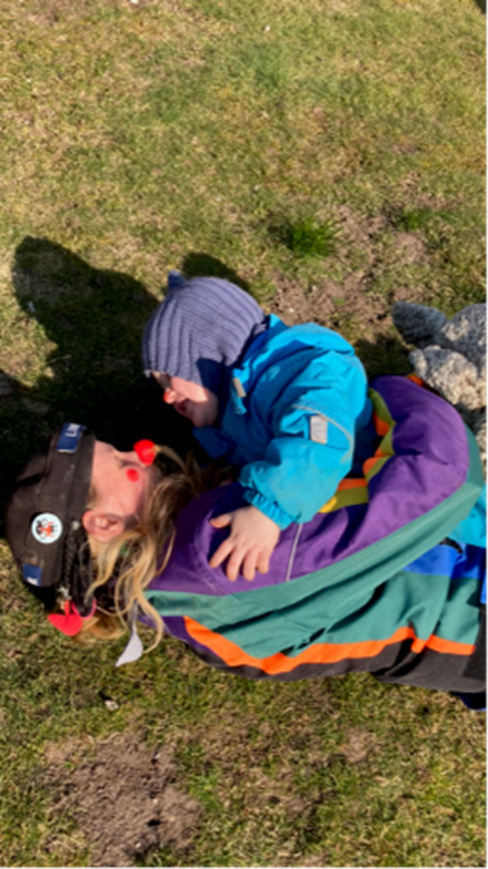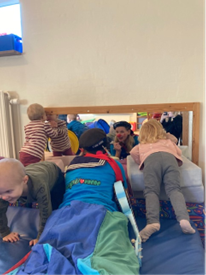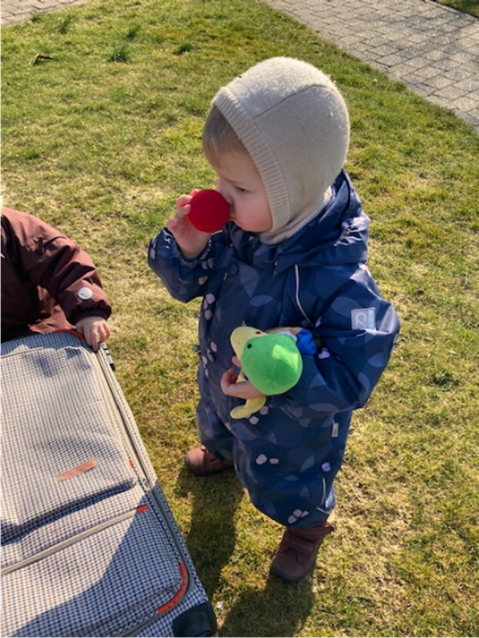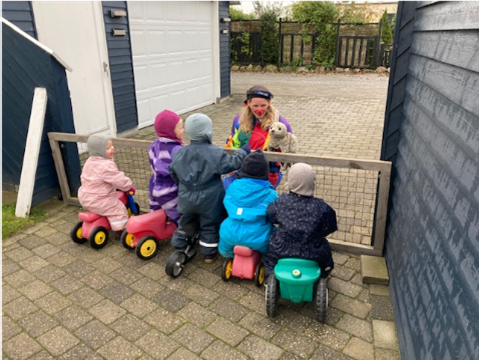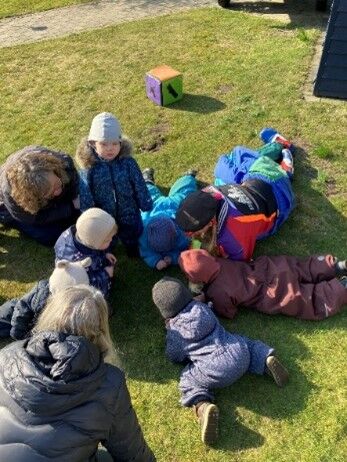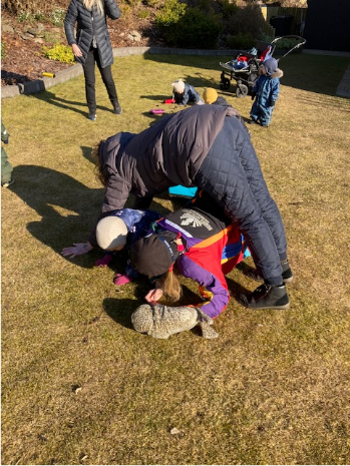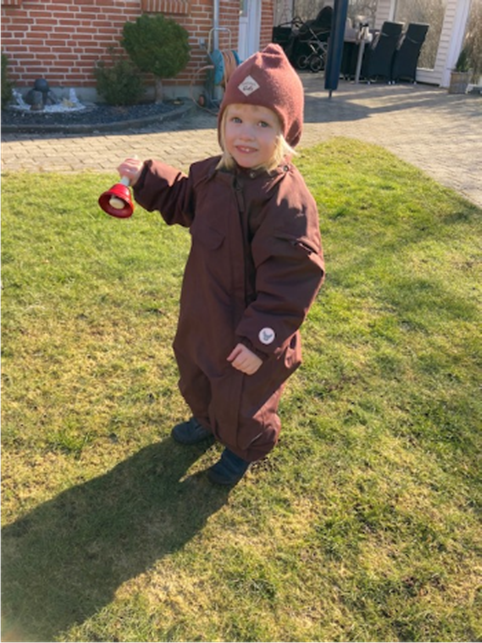MOVEMENT, PLAY, MUSIC, INTERACTION
REGION: Central Jutland
MUNICIPALITY: Viborg
PROCEDURE: 2021
DAILY OFFER: Daycare Area Southwest
Snippet Story: Daycare Southwest Area (2021)
Our snip story was as follows:
We want to work physically, with movement, singing games, gestures, music and mimicry. With joy and with presence. We want to see children's enthusiasm, experience what happens when they learn different new gestures, forms of movement and how it can be used in everyday life.
We have a question about how to get everyone in the group of children involved - both the 1-year-olds, who may still be at the crawling stage, and the soon-to-be 3-year-olds, who are jumping and jumping and dancing. We want to work on how the children get that good feeling in their bodies, see their enthusiasm and experience that they are part of an interaction.
We have had two childminders working on the program with 8 - 9 children, some of whom have gone to kindergarten and new ones have joined. We have worked with Luni Smil, who always came as a clown.
There have been changes in the framework for our activity. In the beginning we were in the playroom, in a motor skills room, but lately we have been outside. We quickly realized that the room in the garden could do something. We have used a carpet on the grass, which has served as a natural boundary and a framework for the activity.
The framework: we found that it made sense to start and end the same way. On the carpet with a song. Then the children went on and off, and in the end we found that almost all the children were there all the time. In the beginning, the framework was unclear to us adults and it was noticeable to the children.
One of the common elements in our activities has been the use of instruments, which has helped to bring the group together. We saw that even the youngest children, around one year old, could join in when they were given a xylophone and a mallet to play with. One of the things we want to take forward is the opportunity to make music accessible in everyday life. Instruments can help create a common third and children can participate regardless of age.
Luni has focused on immediate joy and excitement. If a child threw themselves on the grass, she followed. If they started rolling around, she followed and we followed. We followed the children's tracks. A concrete example: We used a cube that showed different pictures of things we had to do when it landed on a motif - e.g. tree trunk, then you had to roll; frog, then you had to jump - bridge, then we adults made a bridge and the children crawled through. Suddenly the children discovered a big fat earthworm that was on its way under the bridge. Everyone lay down on their stomachs, observed the earthworm, looked curiously at its movements and this continued for a long time. We stayed in it as long as the children were occupied, until it finally wormed its way back down into the grass.
The young and old, did we see a development? Part of our snip wondering was how we could get all the children in the group involved, big and small. By making the common gathering point on the carpet, the little ones were included in this gathering, they were given instruments and we experienced that the big children were good at helping the little ones.
How do we take what we have seen and experienced with us? One thing we've learned is that spontaneous joy and play just needs to be part of everyday life. We can tend to have a plan for everything, but when the kids see that earthworm or break out into that song, we need to follow them and see where it takes us.
There were several nice little experiences around the joy of recognition. The second time we met, one of the children spontaneously broke out in a big "Jaaaaaaaa", with his hands above his head, after a song was finished. The others took this to heart and several times afterwards the biggest children exclaimed "Jaaaaaaaa" after a song. We have also had clown noses painted with red theater makeup - some children never wanted a red nose, others loved it and wanted to give us adults red noses. It is in the simple, the close that we have experienced little moments of stardom.
One of the images above shows again how Luni followed the children's tracks. Once they had their red noses on, one of the children ran to the mirror, took a long look at themselves and more children followed. Here we saw the interaction between the children really come to life. They mirrored each other, laughed together and found a common language through the red noses.
In relation to our pedagogical curriculum, which emphasizes that play has value in itself, we experienced that it was really the play that took center stage. The spontaneous play, though set in a framework by us adults, but where the initiatives the children took on that particular day were in focus.
There was a great sense of security in relation to Luni's presence, some were initially apprehensive when she arrived with her big shoes and red nose. We saw lots of flashes of light in the children's eyes, and there was a lot of laughter. When talking about culture, aesthetics and art with children, for us in this project it has been about creating present moments, giving the children experiences of joy, play, singing and the good feeling in the body that we wanted to see. Several times in the daycare center, the children have talked about Luni, about the red noses and about when we would be together again.
What are we curious about? It takes a lot to get the whole group of children involved in an activity because of the huge differences in their development. Whether you're 10 months old and sitting in a pram or almost 3 years old and well on your way to forming relationships with other children and understanding the linguistic context - it doesn't matter. Luni worked with very little speech, but with a lot of body language, through instruments and through play. We can definitely take that with us, to follow where the child goes, to be engaged in what is happening in the moment.
click on the picture to see a larger version


